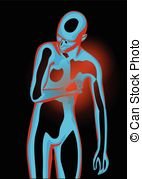
February 2021 is the 57th anniversary of American Heart Month, a time to turn national attention to the importance of heart health and the prevention of heart disease, the number one killer of Americans. Begun during the Lyndon Johnson administration, nine years after the president first suffered a heart attack, American Heart Month has been an enduring reminder to learn the facts of heart disease and the signs of a heart attack and stroke.
Heart Disease Facts and Figures
Cardiovascular disease includes both heart disease and stroke. Together they claim the lives of 2,300 Americans each day. Other disparaging facts include:
- Heart disease kills more people than all cancers combined.
- A majority of people—83 percent—believe heart disease is preventable, but 58 percent do not take the steps necessary to improve their health.
- Nearly three-fourths of Americans consider themselves at risk for heart disease.
Know the Signs of a Heart Attack
If you experience any of the following signs of a heart attack, call 9-1-1 immediately: 
- Pain in the center of the chest—either uncomfortable pressure, squeezing, fullness, or pain—that lasts for more than a few minutes
- Shortness of breath with or without chest discomfort
- Unexplained pain in the upper torso, neck, and jaw and changes in extremities, such as pain, swelling, tingling, numbness, coldness, or weakness
- Dizziness, lightheadedness, nausea, or breaking out in a cold sweat
- Extreme fatigue
- Irregular heartbeat—faster or slower than normal
For more information on warning signs, including the differences between those in men and women, visit the American Heart Association (AHA) website.
Know the Signs of a Stroke
According to the AHA, stroke takes a life every four minutes, which is why it is so important to know the warning signs of a stroke and to seek emergency treatment.
There are three types of stroke, ischemic, hemorrhagic, and transient ischemic attack, with ischemic accounting for 87 percent of strokes. Ischemic stroke happens when blood flow through the artery supplying oxygen-rich blood to the brain becomes blocked. Blood clots typically cause the blockage.
If you experience any of the following signs of a stroke, act F.A.S.T.:
- Face drooping on one side
- Arm weakness or numbness on one side
- Speech difficulty: slurred speech or being unable to speak
- Time to call 9-1-1 if any of these symptoms are present
 Other warning signs of a stroke include:
Other warning signs of a stroke include:
- Sudden numbness or weakness of face, arm, or leg, especially on one side of the body
- Sudden confusion, including trouble speaking or understanding speech
- Sudden trouble seeing in one or both eyes
- Sudden trouble walking, including loss of balance, loss of coordination, and dizziness
- Sudden severe headache with unknown cause
For even more warning signs of stroke, as well as detailed explanations of stroke diagnosis and short videos explaining stroke and seeking emergency treatment, visit the AHA website.
Ways to Prevent Heart Disease
Fortunately, heart disease is preventable. Talk to your health-care provider about your personal risk.
Preventative measures include the following:
- Control your blood pressure: High blood pressure, or hypertension, is a major risk factor for heart disease.
- Quit smoking: Chances of coronary heart disease decrease by 50 percent one year after smoking ceases.
- Get regular exercise: Walking 30 minutes each day can lower the risk of heart attacks or strokes.
- Change your diet: Eating more fruits, vegetables, whole grains, and protein-rich lean meats, fish, and skinless chicken are some of the dietary changes that can keep heart disease at bay.
- Manage stress: Stress can exert physiological effects on the body.
- Manage diabetes: Heart disease risk doubles if you have diabetes since high blood sugar over time can damage blood vessels and nerves.
- Stay at a healthy weight: Added weight is linked to many heart disease risk factors, such as high blood cholesterol and triglyceride levels, hypertension, and diabetes.
- Keep cholesterol and triglyceride levels under control: High cholesterol can clog arteries and high triglycerides, another type of fat in the blood, may also raise the risk of heart disease.
- Limit alcohol: Drinking too much can increase weight and raise blood pressure.
- Get enough sleep: Lack of sleep can contribute to high blood pressure, obesity, and diabetes, which can all lead to heart disease.
More Information
Visit the San Diego chapter of the AHA online for information on local resources, including CPR training classes, volunteering opportunities, and ways to connect with other heart disease and stroke patients.
February 5 is Wear Red and Give Day, which unites millions of people nationwide in raising awareness about cardiovascular disease in women. For more information, visit the local AHA website.
Herrick Library Resources
The following books and DVDs can be reserved and checked out via curbside pickup or on OverDrive, where indicated*:
- The 30-Day Heart Tune-Up: A Breakthrough Medical Plan to Prevent and Reverse Heart Disease, by Steven Masley
- Complete Guide to Women’s Heart Health, by American Heart Association
- *Coronary Heart Disease: From Diagnosis to Treatment, by Barry Cohen (available in book format and in OverDrive)
- Hypertension and Stroke: Your Annual Guide to Prevention, Diagnosis, and Treatment, by Roger Blumenthal
- Managing Your High Blood Pressure (DVD)
Sources: AHA, Heart Month, https://www.heart.org/en/around-the-aha/february-marks-56th-consecutive-american-heart-month; AHA, If These Signs Are Present CALL 9-1-1, https://www.goredforwomen.org/en/about-us/heart-attack-and-stroke-symptoms; AHA, Stroke Symptoms, https://www.stroke.org/en/about-stroke/stroke-symptoms; Centers for Disease Control and Prevention, Stroke, Types of Stroke, https://www.cdc.gov/stroke/types_of_stroke.htm; The Heart Foundation, Heart Attack: Men vs. Women, https://theheartfoundation.org/2017/03/29/heart-attack-men-vs-women/; MedlinePlus, How to Prevent Heart Disease, https://medlineplus.gov/howtopreventheartdisease.html
Graphics: Can Stock Photo; American Heart Association, https://www.goredforwomen.org/en/get-involved/give/wear-red-and-give

